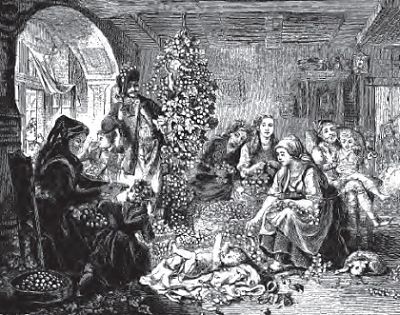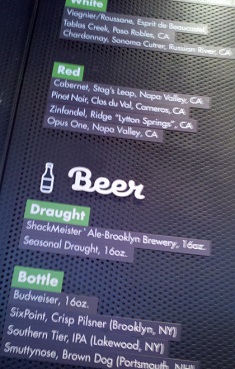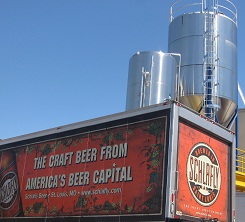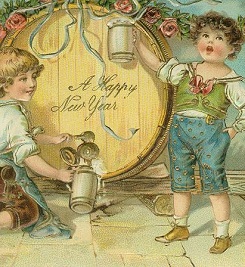
‘Tis the season for predictions. The Future of Beer, or at least for 2012. The rise of gluten free beer, discovering gruit, more hoppy beers, fewer hoppy beers, old school beers, new fangled beers.
There are more where those came from. They can’t all be right in 2012, but they could be in the long run. Because that’s the way beer works. Consider this from Hop Culture in the United States, published in 1883. The subtitle, Practical Treatise on Hop Growing in Washington Territory, pretty much summarizes the contents. (The pastoral image at the top, showing a family comfortably picking hops, is taken from the book.) The back of the book includes a variety of statistics and contributions from elsewhere. The sources aren’t always obvious, but this was surely written by somebody in England.
Influence of fashion on the use of hops
“The brewing industry is not exempt from the influence of fashion. A careful survey of the types and descriptions of beers in vogue at different times, will show that fashion has had something to do with our trade. Without going back to the olden days, when our Saxon forefathers imbibed freely of ale and mentheglin made from barley and honey, without any admixture of flavoring herbs, we may refer to the period when the introduction of hops into this country gave quite a different character to the national beverage; instead of the sweet and mawkish ale, a true beer, flavored with aromatics essence of the hop, came into fashion.
“This took place in the sixteenth century, since when, hopped beers have been more or less in fashion. Towards the end of the eighteenth century, there was a great rage of black beers, and so great was it that our metropolitan brewers found their trade rapidly increased by the production of this article; porter was consumed in enormous quantities, and it seemed at the one time as if light-colored beers would become things of the past. We know now that fashion for porter and stout is in the decline. Large breweries, at one time engaged solely in the production of these specialties, have altogether discontinued the brewing of black beers.
“Toward the end of the last century and at the beginning of this, the taste of the public inclined to very strong ales. The old-fashioned stingoes and strong stock ales were consumed in large quantities and with thorough relish at this period, probably because the habits of life which then prevailed, caused the physiques of the people to be stronger than the present times. In those days, beer was brewed regardless of cost in many a household, and the modern private trade brewer had scarcely started into existence. Gradually the taste for lighter and cheaper beers grew, until the year 1851, when the great Exhibition marked an era in brewing, as it had done in other industries. The splendid productions of Messrs. Bass and Allsopp, then attracted much attention, and from that time the taste for high-hopped beers has gone on increasing until lately, when there has been an evident tendency to fall back again upon milder and less bitter beers.
“During the last two or three years, brewers have experienced a demand for beers of very low gravity, and containing less of flavor of the hops than was fashion on some twenty years since, and of course it is their bounded duty to comply with the dictate of fashion in this respect. We will not further refer to the threatened introduction of lager beer into this country, than to say fashion takes strange freaks, and it will be well for brewers to be prepared for all eventualities.”
Their bounded duty to comply with the dictate of fashion.


 If you’d like to see what my head looks like on a platter, you might try to reconstruct1 the happenings on Twitter last week when I naively
If you’d like to see what my head looks like on a platter, you might try to reconstruct1 the happenings on Twitter last week when I naively  It’s Monday, so a few links. Big picture and 2011 recap stuff. Some are lists.
It’s Monday, so a few links. Big picture and 2011 recap stuff. Some are lists.